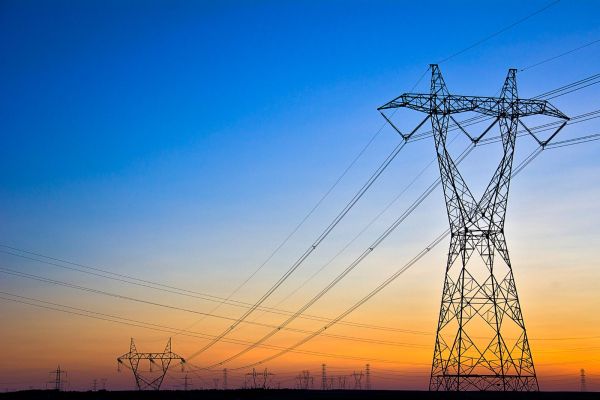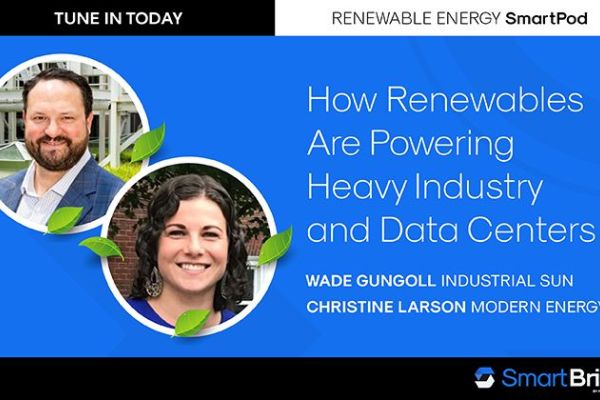It Just Got Easier Being Green: Leveraging Industrial Net-Metered Solar and the 45V Tax Credit For Green Hydrogen Production
Insights
May 23, 2024
Written by Haris Rafiq

In 2023, the global green hydrogen market was valued at over $6 billion USD, projected to top $165 billion USD by 2033. Domestically, the Biden Administration is betting big on green hydrogen, from the creation of Clean Hydrogen Hubs to tax incentives.
Specifically, the Inflation Reduction Act (IRA) and the Bipartisan Infrastructure Law (BIL) feature the world’s most ambitious policies to support the growth of our nation’s clean hydrogen industry and have already created a robust pipeline of planned clean hydrogen projects.
And 45V, the Clean Hydrogen Production Credit—for which the U.S. Treasury Department is currently developing guidance—will double down on the support for this burgeoning and promising industry. One of the pillars of eligibility for this innovative tax credit, as stipulated by Treasury, is that the production of electrolytic hydrogen (hydrogen produced by electrolysis) must be powered by additional, proximate, clean energy sources—and net-metered industrial solar fits the bill.
Below, we’ll explain a bit more about green hydrogen and how the 45V production credit and net-metered industrial solar could prove to be a match made in heaven.
What is green hydrogen? Current market landscape
There is a veritable rainbow of hydrogen types produced by either pyrolysis or electrolysis. Due to its price per kilogram, grey hydrogen is currently the most common varietal on the market. However, this necessitates a trade-off between economic cost and environmental impact.
Grey hydrogen is emissions-intensive, responsible for “between 11.1 – 13.7 kg of CO2 equivalent for every 1 kilogram of hydrogen.” On the other hand, green hydrogen, or hydrogen produced by electrolysis powered by renewable energy sources, is the cleanest, most sustainable type of hydrogen on the market. According to the World Economic Forum, it comprises just 1% of overall hydrogen production. The 45V tax credit aims to change this.
45V: Where are we at vis-a-vis Treasury guidance, what are the stipulations, and how will this change the industry’s trajectory?
Currently, there is a significant price gap between grey and green hydrogen. According to IRENA, “Green hydrogen now costs USD 4-6/kilogram (kg), 2-3 times more than grey hydrogen. The largest single cost driver is renewable electricity.”
The 45V tax credit aims to close this gap. 45V “provides a tax credit of up to $3 per kilogram of hydrogen to projects with low lifecycle greenhouse gas emissions.”
In December, Treasury and the IRS proposed guidance for the 45V tax credit, and the final guidance is expected to come out shortly. Current U.S. Treasury guidance for 45V is structured, among other things, around a three-pillar requirement to ensure that the electrolytic hydrogen production subsidized by it is not increasing greenhouse gas emissions.
The guidance stipulates that hydrogen producers use energy attribute certifications (EACs) to verify that their electricity generation is:
- “Time-matched to the period during which the electrolyzer is operating—beginning on an annual basis, and later transitioning to an hourly basis as tracking systems improve.” It is important to note that the guidance does not "wait" for tracking systems to improve; the current guidance is contemplating a switch over to hourly matching as early as 2028.
- “Deliverable to the electrolyzer—by being located in the same grid region as described in the NPRM and in GREET documentation, and based on the Department of Energy’s 2023 National Transmission Needs Study;” and
- “Incremental to existing generation—such as from new clean power plants.” Generation must have come online no GREATER than 36 months prior to COD of the hydrogen electrolyzer.
The ultimate goal of this tax incentive is to support the cost competitiveness and, ultimately, the expansion of green hydrogen generation and adoption.
Why net-metered industrial solar + green hydrogen make a great team
We, in the net-metered industrial solar world, see the vast potential in 45V. We’re ready to step up to the plate, whether the final ruling favors green hydrogen via renewable electrolysis, or if it’s inclusive of clean hydrogen by various definitions.
Industrial Sun and our approach can help hydrogen producers both lower their carbon intensity to meet the 45V requirements, as well as lower their operating costs. Via net metering, we can provide the lowest cost renewable energy in ERCOT to power your operations.
Net-metered industrial solar involves locating larger solar projects near industrial facilities. The industrial signs a competitive power purchase agreement (PPA)—instead of owning the project and paying capex costs. When it comes to the specifics of the 45V tax credit, here’s how our approach can satisfy each of the requirements:
- Time-matched: Though the project is essentially third-party owned and operated, we can ensure that it's clean, inexpensive solar running your electrolyzer. The project will provide real-time net metering and will produce the necessary Environmental Attribute Credits (EACs) to meet this requirement.
- Deliverable: Because your net-metered industrial solar project resides within the same grid region as the electrolyzer it is powering, it checks the deliverable box, too.
- Incremental: We can also confidently check the incremental box because it is a new project, built and installed specifically to power your green hydrogen production facility. And, as aforementioned, you benefit directly from the project sans project/capex costs.
But the biggest win of all lies in the fact that we can net against real-time energy, demand charges, and ancillary services, which lowers the effective cost of the electricity powering your green hydrogen production.
In addition to shrinking your bottom line, from an industry perspective, we can directly chip away at the grey vs. green hydrogen cost differential: the primary reason green hydrogen is currently three times the cost of grey is due to the energy costs of producing it.
Greening the bottom line
A new era of green hydrogen expansion is upon us–and the future looks bright.
Thanks to the energy-cost-cutting capabilities of net-metered industrial solar, you can power your green hydrogen production facilities with the lowest possible cost renewable energy out there–while simultaneously reaping the benefits of the 45V production credit.
There’s free money on the table; learn how net-metered industrial solar can help you claim it.
Haris Rafiq is a Senior Analyst, Origination at Industrial Sun.
Learn more about net-metered industrial solar and how it can help you slash your green hydrogen production costs by contacting us here.




